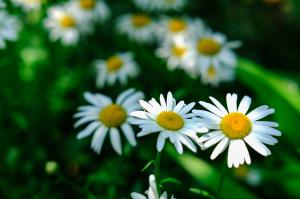Do Female Pot Plants Make Seeds?
Female and male cannabis plants have distinct characteristics, and one of them is the ability to produce seeds. Female plants are valued for their high resin production, which is used to make cannabinoids, terpenes, and flavonoids. However, male plants can pollinate the females and trigger seed production, which is generally unwanted in the marijuana industry. Therefore, it is essential to understand whether female pot plants can make seeds and what conditions can affect their ability to reproduce.
Female vs. Male Cannabis Plants
Cannabis plants have two primary genders - male and female - and their physical appearance and reproductive organs are distinct. Female plants have dense flower buds with pistils, which are hair-like structures that contain the reproductive organs, called stigmas. Male plants, on the other hand, have elongated buds with pollen sacs, which contain the male reproductive cells, called pollen grains.
Typically, female plants are preferred over male plants because they have a higher content of cannabinoids, especially CBD and THC, which have significant therapeutic and recreational benefits. In contrast, male plants do not produce as much resin, and their pollen can fertilize the female plants, causing them to produce seeds. This is why male plants are often removed from the cultivation process to prevent pollination and preserve the quality of the female plants' flowers.
Factors that Can Affect Seed Production
While female cannabis plants do not produce seeds naturally, several factors can affect their ability to develop them, such as stress, age, temperature, and light exposure. Stress is one of the most common factors that can cause female plants to produce seeds. When cannabis plants are exposed to adverse conditions, such as extreme heat or cold, overwatering or underwatering, nutrient deficiencies, pests or diseases, they can trigger a survival mechanism called hermaphroditism, which causes the female plants to develop both male and female reproductive organs.
Another factor that can affect seed production is the age of the female plants. As cannabis plants mature, their hormone levels can change, and it can trigger seed development even without the presence of male plants. Therefore, it is essential to harvest the female plants at the right time to avoid seed production and preserve the potency and flavor of the flowers.
Temperature and light exposure can also affect seed production in female cannabis plants. High temperatures, especially during the flowering stage, can cause the pistils to dry out and turn brown, which can reduce the quality of the flowers and trigger seed production. Likewise, exposure to excessive light, either natural or artificial, can cause stress and lead to hermaphroditism in female plants.
Maintaining Seedless Female Plants
To ensure that female cannabis plants do not produce seeds, several methods can be used, such as selecting high-quality female genetics, using feminized seeds or clones, and providing optimal growing conditions. Feminized seeds are genetically modified to produce only female plants, which eliminates the risk of seed production and ensures a higher yield of potent and flavorful buds. Additionally, clones are cuttings taken from female plants, which inherit the same genetic traits and characteristics, ensuring that they will also be female and seedless.
Optimal growing conditions, such as proper temperature, humidity, light exposure, and nutrient balance, can also minimize the risk of stress and hermaphroditism in female cannabis plants. Ensuring that the plants receive regular check-ups, appropriate watering, and adequate airflow, can also improve their overall health and prevent the development of seeds. By maintaining seedless female plants, cannabis growers can ensure consistency, quality, and potency in their products, as well as reduce the risk of seed contamination and crop loss.
Conclusion
While female cannabis plants are valued for their resin production and high cannabinoid content, they can produce seeds under specific conditions, such as stress, age, temperature, and light exposure. By understanding these factors, cannabis growers can take steps to prevent seed development and maintain seedless female plants, ensuring consistency and quality in their products. Furthermore, maintaining seedless plants can also reduce the risk of crop loss and contamination, which can impact the yield and profitability of the cultivation process.

 how many times do yo...
how many times do yo... how many planted tre...
how many planted tre... how many pine trees ...
how many pine trees ... how many pecan trees...
how many pecan trees... how many plants comp...
how many plants comp... how many plants can ...
how many plants can ... how many plants and ...
how many plants and ... how many pepper plan...
how many pepper plan...






























